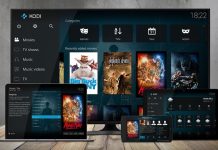Money is something that we use every single day. Whether it is in cash, coin, or credit, money plays a vital role in society. Everyone makes a living in order to pay for their basic needs, and hopefully some fun along the way too. For adults, money can be stressful, but kids can have a hard time dealing with it too, but in a very different way.
For some students, counting money and counting are two different things. Understanding basic math skills can be something that takes years, but when placed under the guise of a monetary setting, it can start to make less and less sense. Like telling time, money adds a complexity to counting that some students struggle with, but luckily, a new player in the classroom can make things much easier.
SmartBoard technology is changing the way students learn, and not just when it comes to writing and reading. Math has benefited largely from SmartBoard technology and it easy to use website for content that is shared by teachers, Smart Exchange. Students can use SmartBoard technology to interact with their classroom content like never before, and for many, it makes a big difference. Like play money used for teaching, digital games and lessons using a SmartBoard can help students have a more practical point of reference for something they are going to use for the rest of their lives: money.

SmartBoard Success
Classroom performance is a focus for teachers, principals, superintendents, and entire states. Even the federal government looks at classroom performance as a way to note if schools are staying up to the educational code deemed necessary for students of each and every age in K-12 grades. Benchmarks are different for each grade, but at the very basic level, they require students to use basic knowledge in the classroom that will one day help them in the future as adults and citizens.
It is a major undertaking teaching young children skills they will require 10 and even 20 years down the road from their current grade school classroom, but it is the best way to prepare and shape young minds. Like putty, a child’s mind is formed and shaped by who has their hands on it, and educators should not take this lightly. Teaching principals are constantly being adapted to apply to the best form of education available for students, and the biggest change in the past 20 years has been the emergence of the internet in a big, big way.
Libraries are no longer home to only books and word processors. Likewise, the classroom is no longer just a place for lecturing and note taking. Technology has made the classroom and other various learning environments a place for students to live and play their way in order to best fit the class’ content to the things they enjoy. Many students like games, which is why technology creates so many opportunities for educational games, and one place you see that often is in math. One of the more practical forms of math and counting is money, and students learn money at a young age so they understand it as a counting principal, even if they will not be making it themselves any time soon.

Money and Smart Exchange
In many ways, learning the concept of money and counting money is one of the most important steps for a young student in a K-12 system. Money will follow them everywhere. Taxes that pay for schools are paid for in money, and they will one day take what they have always wanted to be when they grew up and make it a career to earn money. As the world changes, so do the ways you can make money, and likewise, the ways you can teach it to students.
Smart Exchange, as noted above, is a hub for teachers and educators to create lessons and interactive activities to teach various subjects and areas of educational importance. Money is one area of educational lesson making that you find a lot of in Smart Exchange’s pool of content. Smart Exchange does require a SmartBoard to use its formatted content, but many schools have them now, and that means many schools should be reaping the benefits of Smart Exchange’s various money programs.
One simple option to utilize SmartBoard’s Smart Exchange for lessons on money is a program that shows what each different coin and dollar bill looks like along with its value. After noticing the difference, the lesson allows students to drag money into a pile to count it, teaching them quicker methods for counting and allowing them to interact with the lesson. If only shown numbers on a board, students have a hard time understanding the role money has in society and its numerical and societal value. Monetary value is given to these coins and paper bills, so it helps to match the two, and SmartBoard solutions on Smart Exchange offer a wide variety of ways to teach this to young children.
In a way, fake money or play money has served this role, but with each student having money at their own desk, the risk for distraction is too high. With a game on the board or interactive lesson in front of them on the SmartBoard, their eyes and attention are up with the teacher, making it easier for them to follow along. Young minds are often distracted and easily pulled away from content, but Smart Exchange and the wide variety of SmartBoard programs on its website allow teachers to make the best plans possible for teaching content to young students.
In the end, money is something that, as adults, these children may love or hate. They might be stressed out by it, addicted to earning it, or have a responsible relationship with it. Their knowledge of money and its value can be a big indicator of how they respect it and use it in their future lives, making the teaching of money counting and its processes incredibly important. For teachers, Smart Exchange offers the best path forward for education students about the value and role of money.

Taylor is a freelance SEO copywriter and blogger. His areas of expertise include technology, pop culture, and marketing.













